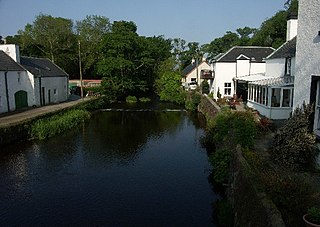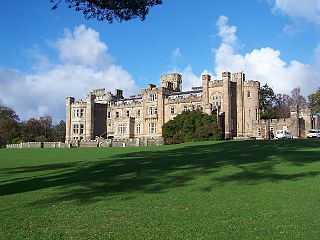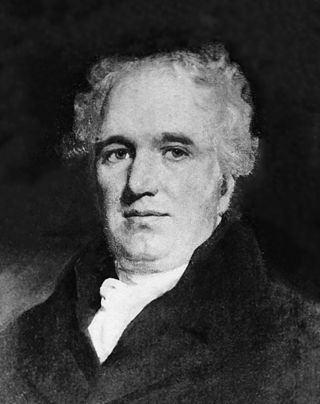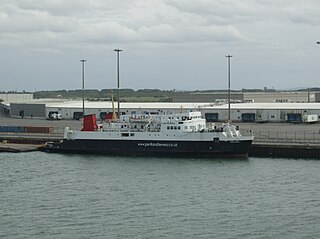
Argyll and Bute is one of 32 unitary council areas in Scotland and a lieutenancy area. The current lord-lieutenant for Argyll and Bute is Jane Margaret MacLeod. The administrative centre for the council area is in Lochgilphead at Kilmory Castle, a 19th-century Gothic Revival building and estate. The current council leader is Robin Currie, a councillor for Kintyre and the Islands.

Islay single malts are the single malt Scotch whiskies made on Islay or Ìle in Gaelic, one of the southernmost of the Inner Hebridean Islands located off the west coast of Scotland. Islay is one of five whisky distilling localities and regions in Scotland whose identity is protected by law.

Coleraine is a town and civil parish near the mouth of the River Bann in County Londonderry, Northern Ireland. It is 55 miles (89 km) northwest of Belfast and 30 miles (48 km) east of Derry, both of which are linked by major roads and railway connections. It is part of Causeway Coast and Glens district.

Jura distillery is a Scotch whisky distillery on the island of Jura in the Inner Hebrides off the West Coast of Scotland.

Caol Ila distillery is a Scotch whisky distillery near Port Askaig on the isle of Islay, Scotland, owned by Diageo.

Port Askaig is a port village on the east coast of the island of Islay, in Scotland. The village lies on the Sound of Islay across from Jura.

Bridgend is a village on the Inner Hebrides island of Islay off the western coast of Scotland at the tip of Loch Indaal. The village is within the parish of Killarow and Kilmeny.

Ballygrant is a small village on the Inner Hebrides island of Islay of the western coast of Scotland. The village is within the parish of Killarow and Kilmeny.

Castle Toward is a nineteenth-century country house in Argyll and Bute, Scotland.

Kirkman Finlay was one of the leading merchants in Glasgow, Scotland. He was Lord Provost of Glasgow and Member of Parliament.

Port Charlotte distillery was a Scotch whisky distillery on the island of Islay, off the west coast of Scotland from 1829 to 1929. The distillery was based in the village of Port Charlotte 2 miles southwest from the Bruichladdich distillery.

Colonsay is an island in the Inner Hebrides of Scotland, located north of Islay and south of Mull. The ancestral home of Clan Macfie and the Colonsay branch of Clan MacNeil, it is in the council area of Argyll and Bute and has an area of 4,074 hectares. Aligned on a south-west to north-east axis, it measures 8 miles in length and reaches 3 mi (5 km) at its widest point.

Jura is an island in the Inner Hebrides of Scotland, adjacent to and northeast of Islay. With an area of 36,692 hectares (142 sq mi), and 196 inhabitants recorded in the 2011 census, Jura is more sparsely populated than Islay, and is one of the least densely populated islands of Scotland: in a list of the islands of Scotland ranked by size, Jura comes eighth, whereas by population it comes 31st. The island is mountainous, bare and largely infertile, covered by extensive areas of blanket bog.

Islay is the southernmost island of the Inner Hebrides of Scotland. Known as "The Queen of the Hebrides", it lies in Argyll just south west of Jura and around 40 kilometres north of the Northern Irish coast. The island's capital is Bowmore where the distinctive round Kilarrow Parish Church and a distillery are located. Port Ellen is the main port.

MV Pentalina-B was a ferry which operated on a variety of Scottish routes. Launched in 1970 as MV Iona, she was the first drive-through roll-on/roll-off ferry built for the David MacBrayne fleet. She was the first ship in the company's history to have bridge-controlled engines and geared transmission, rather than direct drive. During her career she inaugurated more endloading linkspans than the rest of the fleet put together. Purchased by Pentland Ferries in 1997, she was renamed MV Pentalina-B and operated across the Pentland Firth until the arrival of their new vessel. In 2009, she was sold to a Cape Verde owner.

Bunnahabhain distillery was founded in 1881 near Port Askaig on Islay. The village of Bunnahabhain was founded to house its workers.
Bruno Lionel Schroder was a British banker and billionaire and a significant landowner in Scotland. He was a direct descendant of Johann Heinrich Schröder, co-founder of financial institution Schroders, and the longest serving non-executive board member of any company on the London FTSE 100. Forbes magazine estimated Schroder's family wealth at US$6.2 billion in August 2018.
Leonie Kira Emma Schroder is a British billionaire heiress, and the daughter of the late Bruno Schroder of the Schroders dynasty. After his death in March 2019, she took over his seat on the board of directors.
James Finlay & Co was formed in 1750 and under the leadership of Kirkman Finlay became one of Scotland's leading cotton manufacturers and merchants. In the 1860s the firm came under the control of John Muir and diversified into Indian tea plantations. The cotton business was eventually closed and, after an unsuccessful period of diversification, Finlay concentrated on its core interests of tea and other agricultural produce. In 2000, the firm was acquired by John Swire & Son.

William Spence was an architect based in Glasgow.




















